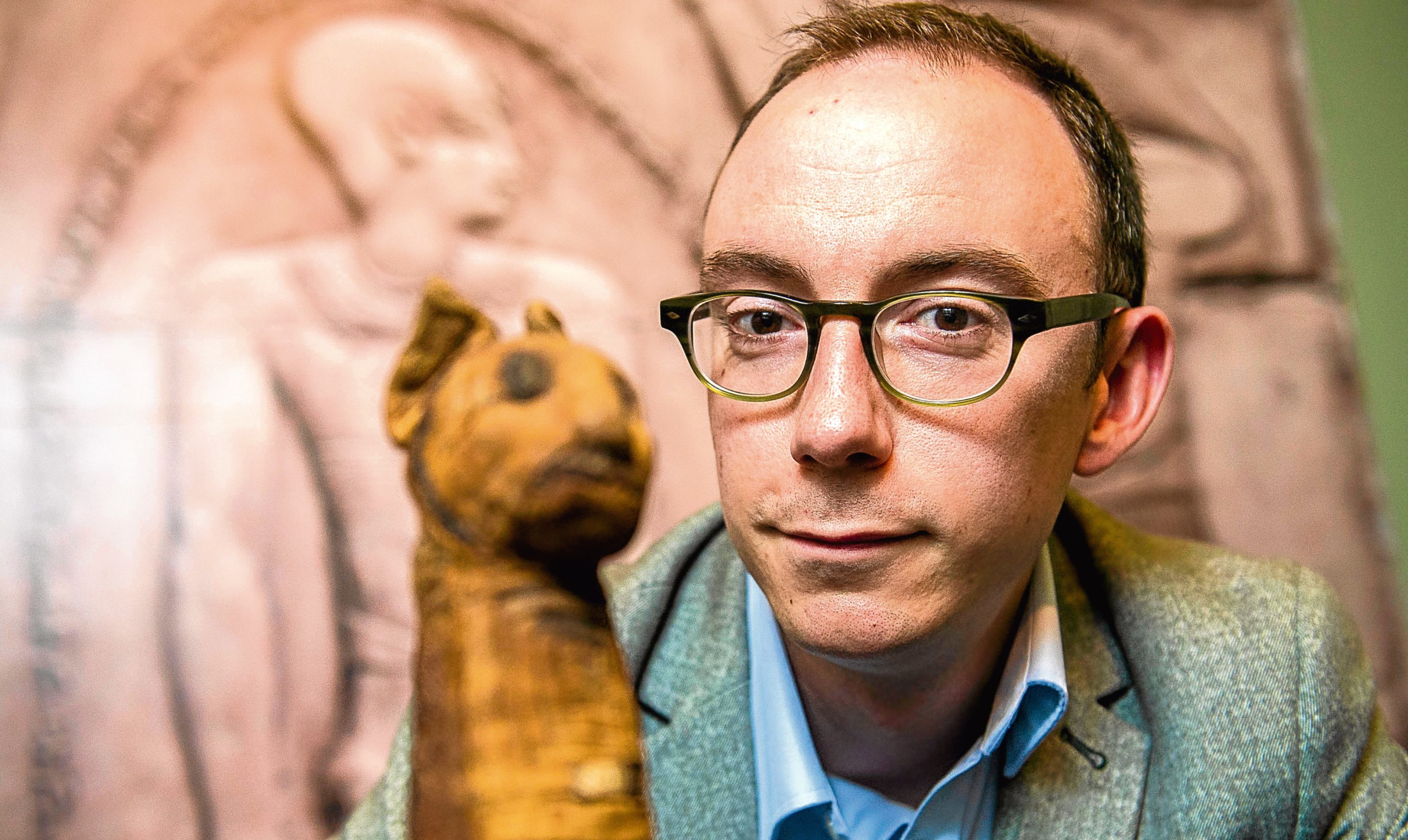
A NEW look at Egyptian mummies is explained in Gifts For The Gods: Animal Mummies Revealed, at Kelvingrove Museum in Glasgow until September 4 (visit glasgowmuseums.com).
The man behind it – Milngavie-born Dr Campbell Price – told Bill Gibb the Honest Truth about the bizarre mummies.
What’s your background?
I’m an Egyptologist and the curator of Egypt and Sudan at Manchester Museum.
It’s a thrill to be able to bring the exhibition to Kelvingrove because that’s where I got my passion for all things Egyptian.
I was taken there by my parents when I was five and, when I saw the mummies, I was totally hooked.
What period are we talking about?
The Pharaohs were around from 3000BC until 30BC and the death of Cleopatra.
But the period we are looking at – the mummification of animals – was really just the latter stages, from about 700BC. It actually continued until 200AD, so the best part of 1000 years.
When did mummification start?
Human mummification begins just after 3000BC because the Egyptians wanted to preserve the human body for the after-life.
They believed that part of the soul needs to recognise the body after it has been buried in a tomb.
To do that they used artificial mummification with chemicals to dry the body out and give it a lifelike shape. It was only for the elite, the really wealthy, as it was an expensive process, not just the oils and the chemicals, but also the bandages.
Why did animal mummification come into being?
Nowadays you might go into a big church or a cathedral and light a candle. This was the equivalent then.
You would, instead, give these votive mummies as gifts for the Gods.
There were lots of these animal offerings then?
Huge numbers – I think something like 70 million! It was an absolutely massive industry in ancient Egypt.
Were they just like the human mummies?
No, the technique had one important difference.
Our research here at Manchester – we’ve been working on it for about five years and putting the exhibition together for three – has shown that the brains and internal organs aren’t removed, as they would be in a human mummy.
They are essentially just covered in a resinous, anti-bacterial preservative and then wrapped up in linen.
It sounds like it was quite an industry.
Absolutely. If not actually factories, you would have had workshops producing these things on a pretty industrial scale.
They would have the production line process honed to a fine art and we’ve seen very similar techniques on different animals indicating they came from the same kind of workshop.
So what kind of animals are we talking about?
The most important thing to get across, I think, is that these are not pets.
You had all sorts of creatures from cats to birds, jackals to crocodiles.
Although the Egyptians have this reputation of loving animals and domesticating them, we think that it could be a tough time being an animal after the mummification craze began.
One thing we discovered is that a large number of the creatures were young, so they must have been breeding them to supply the booming industry.
Anything else unusual that your team discovered?
One of the big things is that only about a third of the mummies – and we’ve studied over 1000 – contain complete animals.
Another third have just a part, maybe a skull or a leg for example.
And the last third have no animal remains, just mud or reeds perhaps, that the animals live with. That was still seen as a suitable gift for the Gods.
READ MORE
The history of cake in 30 fascinating facts
The story behind Culloden- the battle that was to change history

Enjoy the convenience of having The Sunday Post delivered as a digital ePaper straight to your smartphone, tablet or computer.
Subscribe for only £5.49 a month and enjoy all the benefits of the printed paper as a digital replica.
Subscribe